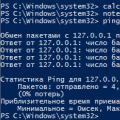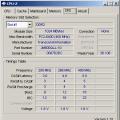You can not only play around with them voice search in Google (there are a lot of extensions for the Chrome browser for this, they are almost all the same, they use the same thing, but I found the most convenient extension “Voice search 2.02 - in all input forms a microphone icon appears by clicking on which you can say or dictate, or rather, a request search as in the picture) but with speech recognition somehow, but still work.
I was not able to achieve any kind of reciprocity from Siri on Apple, to the extent that it could be “used” for something serious, after all, it is “imprisoned” by English language It has an effect, but I already know the addresses of the nearest dumpling shops. In any case, Google remains the leader in speech and voice recognition; it’s a pity that it is not yet possible to use it programmatically and in Russian.
So the main weak point of microphones is sensitivity, and then of course the price.
Here is an example of how you can get around these two restrictions for very little money, and if you have the details listed below, then for free, you can get a fairly sensitive homemade microphone. A photo of how to make it yourself, a description of how it works and microphone diagrams are below.
Made by me homemade microphone It is highly sensitive and can even perceive the ticking of a clock at a distance of several meters. It also allows you to record high-quality sound using a computer. Recording quality also depends on the capabilities sound card V system unit. In the design of the microphone unit, components of worn-out electronics are used as much as possible.
Electret microphone can be taken from any old radio (as a last resort - from mobile phone). I used two microphones at once (+), which made it possible to significantly expand the directional pattern of sound perception. The signal from the microphones, amplified by the low-noise transistor VT1, is fed to the operational amplifier DA1 (see Fig. drawing - microphone diagram). The amplifier's output can be connected to regular headphones or further fed to recording and signal processing devices ( desktop computer, laptop, etc.).
Drawing 1. Microphone circuit
The microphone amplifier is powered from the battery of any old mobile phone. Its battery life is tens of hours. You can use a free USB port on your computer to charge the battery. The amplifier can be left constantly plugged into the port, since the charging current is low. I took the cable with the USB connector from the mouse. The amplifier output connector used 03.5 mm, like for headphones, from any player, the volume control, too, and the rest of the parts, including the SA1 power switch, were any small-sized ones.
All components should be placed on a small fiberglass board (photo 1 - above). I glued a small piece of foam rubber onto the battery, and laid the board on top (photo 2). I tied it all together well with electrical tape and tried on the regulator knob (photo 3). Then, to eliminate interference and interference, such a “sandwich” was placed in a tin screen, which was soldered to the common wire (photo 4, 5).
Microphones need to be secured in a piece of dense, soft material. After that, I cut out a niche in a piece of foam rubber (which, for example, is used for washing a car) and inserted the entire block into it (photo b, 7), and put a fabric cover on top of it (photo 8). You only need to provide slots for the plug, switch and volume control.
 1 PC. handmade felt homemade fabric flowers craft feltro…
1 PC. handmade felt homemade fabric flowers craft feltro…
14.05 rub.
Free shipping★★ ★★ ★★ ★★ ★★ (4.80) | Orders (268)
To assemble the sensitive microphone circuit we will need:
1. Transistor BC547 or KT3102, you can try KT315.2. Resistors R1 and R2 with a nominal value of 1 kOhm. To increase the sensitivity of R1 for the capsule, rated from 0.5 - 10 kOhm.
4. Disk ceramic capacitor nominal 100-300 pF. It can be omitted if initially there are no “spikes” or excitations of the amplifier.
5. Electrolytic capacitor 5-100 µF (6.3 -16 V).
First of all, let's determine the polarity of connecting the microphone capsule. This is done simply: the minus is always connected to the body. Then we assemble the circuit, either by surface mounting or on a mini-board. All sensitivity preamp will depend on the gain of the transistor and the selected resistor R1. Usually the amplifier is assembled and works immediately; its sensitivity should be sufficient with a reserve.
The recording was made using a capsule without a preamplifier circuit.

The recording was made on a capsule from a pre-amplifier circuit.

The difference is visible to the naked eye. Now you don’t have to hang a microphone around your neck and shout into it. You can easily put it on the table and speak without any extra effort. Well, if the sensitivity turns out to be too high, then you can always reduce it without any problems using the settings in the operating system.
Microphone is a device that converts sound vibrations into electricity. In sound transmission, the microphone is the primary link in sound reception. A microphone is a useful device that can be used to communicate on the Internet, as well as to record voices or sounds (instruments, special effects). However, high-quality microphones cost a lot of money, and cheap ones will not provide sufficient sensitivity and quality.
In this article we will tell you how to make a microphone suitable for daily use with your own hands.

What can you use a homemade microphone for?
Of course, making a condenser microphone for vocals or podcasts with your own hands is almost impossible - their design is too complex, which can become a hindrance for a person with little knowledge of electronics.

Electret microphones are much simpler in design and therefore more reliable. In addition, the small size and low cost of electret microphones allow them to be used almost everywhere where sound reception may be required.









Here is a simple way to make such a microphone with your own hands.
What will you need?
- Electret capsule - it can be pulled out of the old one cell phone or radio;
- Jack 3.5 plug for connecting a microphone to a computer;
- Microphone body - a syringe cylinder works well;
- Paper clip - for fixing the case and further attaching the microphone, for example, to clothing;
- Thin wire - cut off a small section 1-1.5 meters long;
- Black foam rubber - a small piece for protection from the wind.

Manufacturing procedure
To make it easier for you to navigate, look on the Internet for photographs of a homemade microphone or a device for a standard electret microphone (“lapel”).
- To make a microphone body, you need to cut off the tip from the syringe body with a knife. You can erase the markings on the syringe with a solvent;
- Insert a wire through the cone of the syringe and tie a knot at its end to secure the microphone in the body;
- Solder the electret capsule to the wire from the node side - connect the shielded braid to its body;
- Install the capsule into the body, and secure the cone with the eye of a stationery clip;
- Solder the second end of the wire to the plug, additionally connecting the left and right channels together;
- Make a narrow round hole in a piece of foam rubber for the microphone. You can cut off any excess corners with a knife - this will give you a decent windproof cap.

That's it, your homemade microphone is ready! You managed to create a sensitive measuring microphone with your own hands, which is also good for communication.

DIY microphone stand
As a rule, expensive and high-quality microphones are bought for serious work or a hobby, be it professional sound recording, broadcasting or hobby vocals.






In the vast majority of cases, for comfortable work and for maximum access to the sound source, you have to additionally purchase a special stand for such microphones. Now we will tell you how to make a tabletop microphone stand at home.

What will you need?
Lamp on a clamp - can be purchased at any electronics store. Attention: the mass of the lamp must match the mass of your microphone, otherwise the microphone on a weak clamp will easily fall under its own weight.

The holder depends on the type of microphone you have: for a dynamic microphone, the holder can be purchased at a price of 250 rubles, for a condenser (spider type) - at a price of 500 rubles.

It is possible to find and purchase an adapter for a microphone holder for easier installation on a clamp.

Manufacturing procedure
- Cut and pull out the lamp wire;
- Disassemble and remove the lamp shade;
- Attach the microphone mount to the thread on the lamp pantograph - due to the mismatch of the thread, you will only be able to screw the microphone mount once;
- Attach the microphone holder to the mount;
- Place the microphone itself in the holder and secure the stand to the table.

Ready! Now you have a convenient, adjustable microphone stand that can be easily attached to your desk, and the clamp design allows you to screw a pop filter and other accessories to it.

DIY microphone photos

























It’s very difficult to get by without a computer microphone these days; without it you can’t use voice search, and you won’t be able to chat with a friend via video call. However, not all computers have built-in microphones, and moreover, they often do not have very good sensitivity. You can solve this problem quite simply - assemble the microphone yourself.
Scheme

The circuit is extremely simple, containing only two resistors, two capacitors, a transistor and an electret microphone capsule. Almost any low-power transistor can be used n-p-n structures, for example, KT3102, BC547, BC337. An electret microphone can be obtained, for example, from a broken headset or handset, or you can buy it at a radio parts store. The sensitivity of the microphone will greatly depend on this element, so it is advisable to take several and check which one is best suited. The advantage of this circuit is that it uses phantom power. Those. The sound signal is transmitted through the same wires as the power supply. If you take a voltmeter and measure the voltage at the microphone input of your computer, it will be about 3-4 volts. When connecting the microphone circuit, this voltage should drop to a level of 0.6-0.7 volts, thus, an external power source will not be needed and there will be no extra wires at the workplace.

Circuit assembly
The circuit contains a minimum of parts, so it can be assembled by hanging installation. But, sticking to tradition, I etched a miniature printed circuit board. The paths can even be drawn with a marker or nail polish. A few photos of the process:


Download the board:
A microphone capsule is soldered on one end of the board, and a shielded wire on the other. Please note that the wire must have a shield, otherwise the microphone will produce terrible noise. The braid of the wire is soldered to the negative, and the two inner cores are connected and soldered to the output of the circuit. It is imperative to maintain the polarity of the microphone capsule, otherwise the circuit will not work. One of its outputs goes to minus, and the second to plus. Determining the polarity is very simple - you need to ring the terminals with metal body capsule. The terminal that connects to the housing is negative.


Microphone assembly
For ease of use, a board with soldered parts must be placed in a suitable housing. Because Since the board has a narrow, elongated shape, you can use an ordinary ballpoint pen as a body. To do this, you need to remove the writing rod from it and check whether the board is the right width. If the circuit is assembled by hanging installation, then it can be given any shape and there will be no problems with capacity. In addition to a pen, any elongated object will work well, be it a marker or a simple plastic tube.

The board is placed inside, the microphone should stick out slightly from the case. The wire comes out from the other side. For reliability, the board along with the wire can be sealed inside the case. The tip of the handle needs to be cut down so that the hole becomes wider and the sound waves can easily reach the microphone capsule.


We solder a 3.5 jack plug to the other end of the wire to connect to the microphone input of the computer. Now the assembly of the computer microphone is complete, you can turn it on and check the sound quality.
Whether you have high-end headphones or just can't find the right headset with mic that suits your tastes, is portable enough, and doesn't detract from your music quality, there's always a way. Turning your favorite headphones into a headset that can record voice, take calls, and control video chats is a real challenge.
Microphones and speakers are similar in many ways. Microphones convert sound into electrical signals, and speakers do the opposite, converting those electrical signals into sound. Despite this feedback with each other, they practically consist of the same components and work on the same sound principles.
How to use headphones as a microphone

Microphones and headphones are made up of vibrating diaphragms that convert sound into electrical signals and back into sound, so you can use headphones to record sound.
When you speak into a microphone, the diaphragm vibrates, sending electrical signals down the wires inside the microphone and into the mixer's preamps. These electrical signals travel through wires to your amplifier and speakers, which have an electrical coil and magnet attached to the speaker cones. When the cones vibrate, these signals are converted back into sound.
Speakers can work like microphones by reversing the flow of electrical signals, with sound waves entering the speaker, causing a magnet attached to it to vibrate, and then sending an electrical signal along its wires. The sound quality of retuned headphones is poorer compared to custom microphones, but can be improved slightly by using the audio settings on your computer.
Recommendations: How to properly set up a headphone microphone on a Windows computer  , How to disassemble headphones: instructions with step-by-step photos of repairing all elements of the headset
, How to disassemble headphones: instructions with step-by-step photos of repairing all elements of the headset  , Making your own simple headphones and headsets with a microphone
, Making your own simple headphones and headsets with a microphone 
Step 1
Find the audio input for the microphone or line input on your computer, and connect headphones to the jack.
Open the Sound Control Panel by going to the Start screen. On software Windows 8 it looks like this:

Step 2
The audio device management program in the search field may be called "Sound" or "Manage sound devices" Click one of these options in the results to open soundbar management.
Click the "Recording" tab and if you have multiple devices, then confirm the use of the selected headphones, set them as default and click the "OK" button.

Step 3
Go to the Recording tab in the Audio Control Panel. Make a continuous tap on your headphones or simply touch them, watching for green bars to respond, indicating that your device is making noise.
After confirming that your makeshift microphone is listed and working, select it and click the Set as Default button. Click "OK" button, now you are ready to use your headphones as a microphone.
How to use headphones as a microphone on your phone and tablet

1. Find an audio recording app that provides audio sensitivity settings to suit sound signal on the device. Alternatively, use an external preamp or mixer to perform the matching. Many mobile devices have strict automatic volume gain control.
2. To convert the headphones into a microphone on operating systems iOS and Android you'll need a mic/headphone adapter that splits the input into two signals: one for the mic and one for the headphones. Connect the jack to the adapter's microphone input and connect the adapter to your mixer or audio interface. Make a couple of test recordings and make adjustments for the best settings.
3. You have a tiny microphone that you can use at a concert or shoot a hidden video with it, because thanks to its small size, the process is easy to hide.
If there is no audio input

It happens that sometimes there is no audio input on Android. In this case, the solution to the problem may be available via Bluetooth, which is also a microphone. So connect it and find an app like Easy Voice Recorder that can record with Bluetooth.
Those who use iPad can try Recorder Plus HD for Bluetooth recording. The problem is that sometimes Bluetooth can interfere, but if this telephone headset– whatever you have is worth a try.




